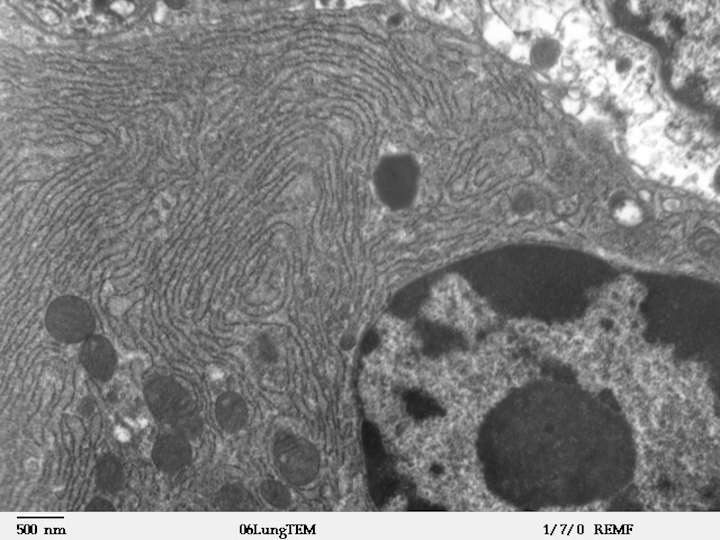The endoplasmic reticulum (ER) is a system of membrane-enclosed sacs and tubules in the cell. Their lumens are probably all interconnected, and their membranes are continuous with the outer membrane of the nuclear envelope1. All the materials within the system are separated from the cytosol by a membrane.
The endoplasmic reticulum is the site where the cell manufactures
-
most of the membranes of the cell (plasma membrane, endosomes, Golgi apparatus, lysosomes, nuclear envelope)
-
transmembrane proteins and secreted proteins
-
lipids (including lipids for membranes)
The various organelles of the cell (mitochondria, peroxisomes, etc.) are not simply floating about in the cytosol but are in close contact with the membranes of the ER. These points of contact facilitate the passage of molecules and ions to and from the organelle and the ER as well as between organelles.
The ER comes in two versions: rough endoplasmic reticulum (RER) and smooth endoplasmic reticulum (SER).
The Rough Endoplasmic Reticulum (RER)
The RER is typically arranged as interconnecting stacks of disc-like sacs. The cytosolic surface of the RER is studded with ribosomes engaged in protein synthesis.
As the messenger RNA is translated by the ribosome, the growing polypeptide chain is inserted into the membrane of the RER.
Proteins destined to be secreted by the cell or shipped into the lumen of certain other organelles like the Golgi apparatus and lysosomes pass all the way through into the lumen of the RER.
Transmembrane proteins destined for the plasma membrane or the membrane of those organelles are retained within the membrane of the RER.
In either case, the portion of the protein within the lumen of the RER is subject to extensive glycosylation (primarily N-linked).
The RER takes up a large proportion of the cytoplasm of cells specialized for protein synthesis such as cells secreting digestive enzymes and antibody-secreting plasma cells.
The Smooth Endoplasmic Reticulum (SER)
The SER differs from the RER in lacking attached ribosomes and usually being tubular rather than disc-like.
A major function of the SER is the synthesis of lipids from which various cell membranes are made or which, like steroids, are secreted from the cell. The SER represents only a small portion of the ER is most cells, e.g. serving as transport vesicles for the transport of protein to the Golgi apparatus.
However, it is a prominent constituent of some cells.
Examples:
-
the cells of the adrenal cortex (which secrete steroid hormones)
-
the cells of the liver (hepatocytes) where it synthesis lipids for secretion of lipoproteins
-
the sarcoplasmic reticulum of muscle cells is SER.
Author: John W. Kimball, republished via Creative Commons Attribution 3.0 Unported (CC BY 3.0) license.
-
Alberts B, Johnson A, Lewis J, Raff M, Roberts K, Walter P (2002). Molecular biology of the cell (4th ed.) Garland Science. ISBN 0-8153-3218-1 ↩︎
Last Updated on November 11, 2022
